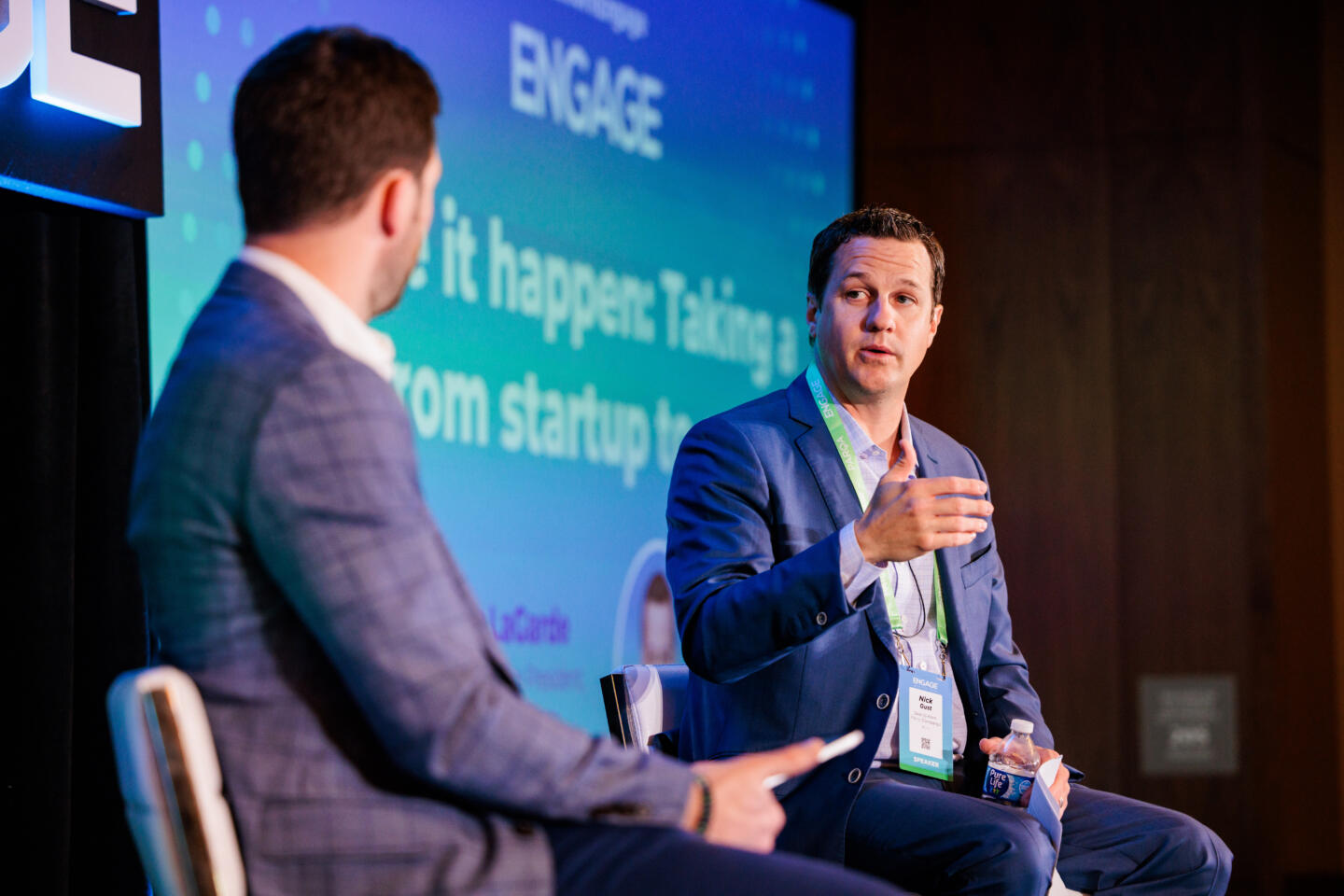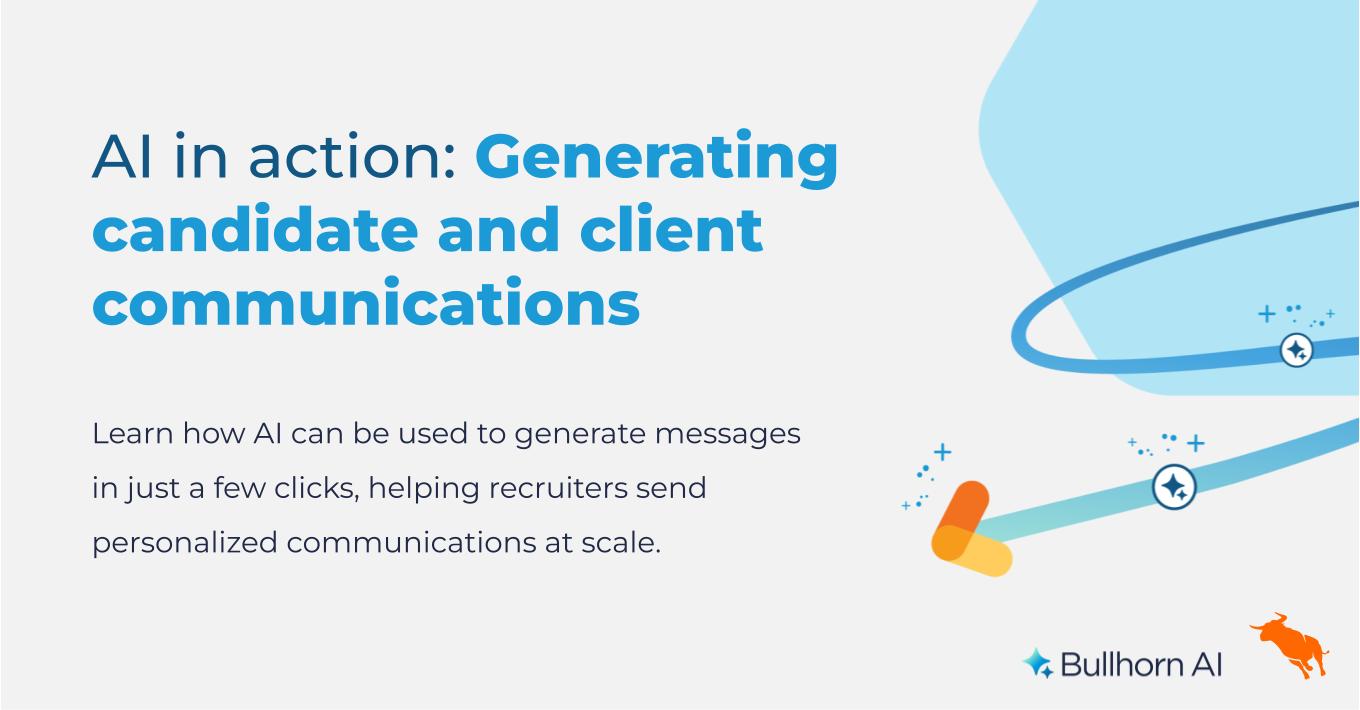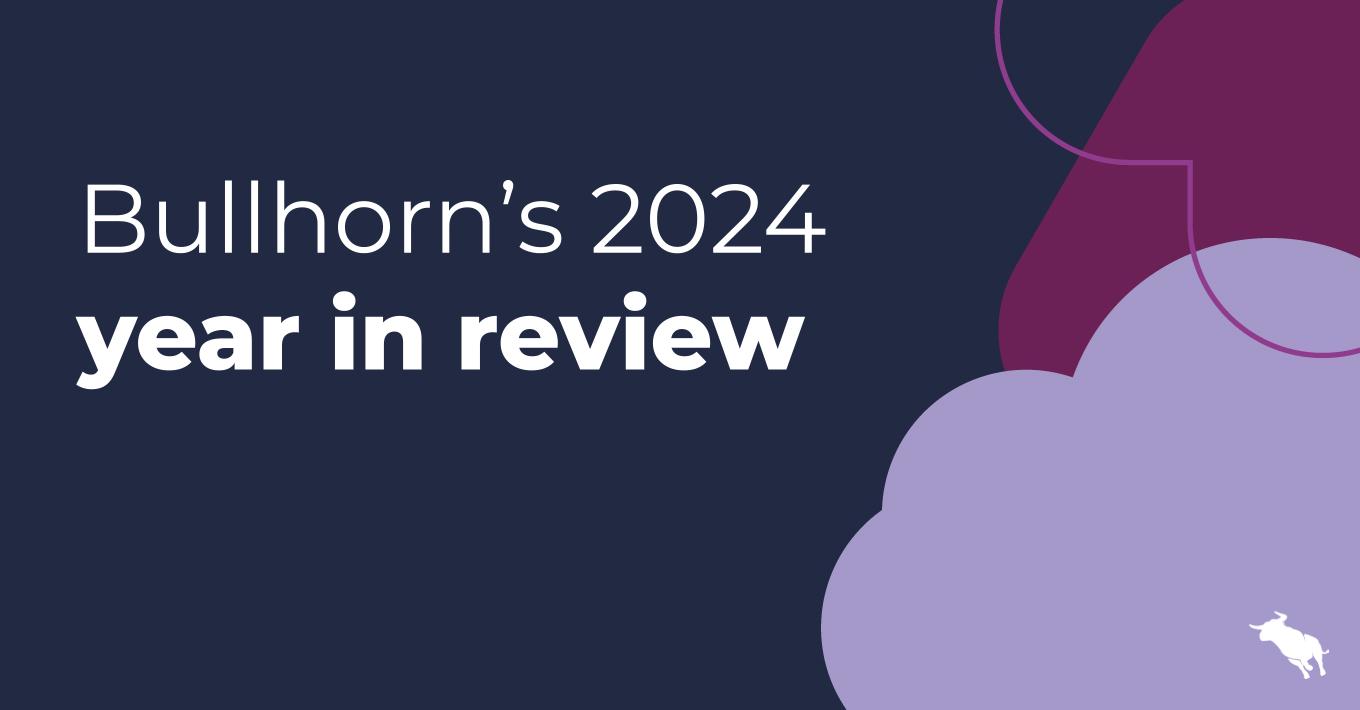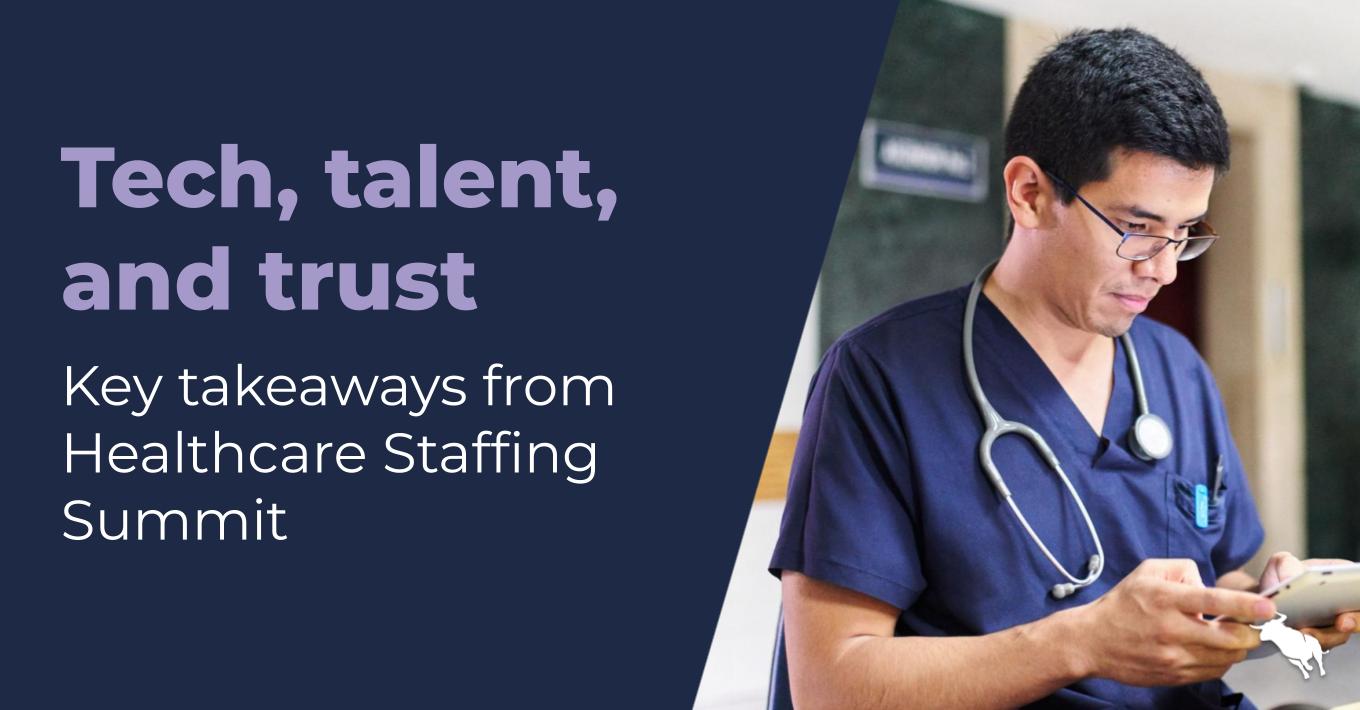Make it happen: Taking a firm from startup to success

Successfully scaling a business is always a balancing act. As companies grow, they need to find that sweet spot between taking risks and sticking with what’s already working. They also have to strike the right balance between investing in people and investing in technology—a choice that’s especially fraught in times of economic uncertainty and a tight labor market. There’s also the question of strategy versus execution: should you develop a rock-solid strategy before you start implementing change or iterate as you go? And how do you ensure that the changes you’re making are aligned with your company’s vision and values?
At Engage Boston 2023, Bullhorn’s Greg LaGarde, RVP, Enterprise, discussed all this and more with Nick Gust, COO of Salo, a Minneapolis-based provider of interim staffing solutions for finance and accounting. Salo was acquired by Korn Ferry in early 2023 after successfully navigating the tumult of the pandemic and achieving impressive growth in the process. Gust pulled back the curtain on how the company successfully positioned itself for purchase by taking calculated risks, investing in technology, and staying focused on the “why.”
Read on for a recap of the conversation, and check out the Bullhorn Engage Boston Content Hub for more from this year’s event.
The power of the “Why”
When Gust joined Salo, it was still a small firm, with a business development team of fewer than ten people. Gust knew that if the company wanted to grow, they first needed to grow their BD team. When he first started recruiting new business development representatives, most of whom were coming from a more traditional finance or accounting role, he focused on anticipating their doubts and assuring them that they could make a great living in staffing.
He soon discovered that he had much more success landing new hires when he focused on the impact that Salo had on its consultants’ lives: allowing them more flexibility, a better work/family balance, and greater career satisfaction.
“The message wasn’t just about money and success,” Gust explained, “it was about the impact we could make. I started using that in the talk track, and then I had our BD teams start using it in theirs, and it really started to explode the opportunity.”
Going forward, Salo embedded this “why” into everything they did operationally and culturally. They wove a candidate-first orientation throughout the organization and let it guide them as they grew.
How does Salo put their “why” into practice to ensure an excellent candidate experience? Gust said it comes down to operational excellence: Making sure that there are multiple touchpoints with the candidate, being aware of their strengths and preferences, and doing whatever it takes to get them out on another job where they’ll be comfortable and where they’ll succeed—not just sending out resumés indiscriminately.
“Our business development team wakes up every day thinking about how to get the consultant that just wrapped up onto the next project,” Gust said. “It’s not that giving the client a good experience isn’t as important. It’s just that we start with the candidate side first.”
Taking risks that align with your vision
Salo is proof that when you have a clear vision and a culture that supports it, your team will be more willing to try new approaches in support of that vision—even when there’s risk involved.
Gust and his team knew that in order to take their volume to the next level while continuing to deliver exceptional candidate and client experiences, they needed to try different tactics. They decided to pilot a new approach to managing BD workload where they paired each business development director with a team member who would take some of the administrative and operational work off their plate, allowing them to focus on generating business. The bet paid off, with three business development directors producing over $10 million each and another doing over $8 million. “When you know what success should look like,” Gust said, “it’s a lot easier to make some calculated risks.”
Investing in technology
Another area where Salo had a clearly defined vision was technology. “We were an early adopter of Bullhorn,” Gust explained. “At the time, we were pretty small, maybe $20 or $25 million in revenue. But we had a vision, and we felt like we could meet it and get to $100 million. We believed in the potential of technology to get us there.”
Salo has invested heavily in tech during Gust’s tenure, doing their due diligence with Bullhorn to determine which functionality would be the most effective in supporting their growth and sustaining a great candidate experience, whether that meant adding texting, new search capabilities, or other features. They took a more cautious approach when it came to people. In some cases, that meant using their own model: there were times when, for example, the company had an interim CFO instead of a permanent one.
LaGarde noted that in times of economic uncertainty, like those of the past few years, there are often two schools of thought when it comes to technology. Some firms make the call to tighten their belts and hold off on any new investments or changes on the tech front when there’s a slowdown, while others see it as an opportunity—a chance to implement new tools, manage through change, and ramp up training.
For Salo, the choice was clear. “Unless you feel like it’s going to be a three, four-year drought,” Gust said, “I’d put the pedal to the metal on investment. Because if things snap back quickly, you’re going to level up even faster than you could before.”
Branch out or double down for new customer acquisition?
After briefly lagging behind customer retention, new customer acquisition is once again the top priority of staffing firms, according to Bullhorn’s GRID 2023 Industry Trends Report.
LaGarde asked about Salo’s approach to customer acquisition—whether the company has focused on expanding regionally and geographically, focusing on existing verticals, or entering new verticals altogether. Gust explained that while the company dipped their toe into the water with legal staffing and other areas, they ultimately decided to stay true to what they knew best and double down.
He also pointed out that acquisition and retention don’t have to be an either-or proposition. “We think the key is to build a big enough business development team that you can do both.” He emphasized that it’s often by successfully retaining clients that companies pave the way for new acquisitions. If you build a great relationship with the buyer, then there’s a good chance that when that person moves on to a new company, they’ll come back to you again—and that’s a net new client. By focusing on delivering a great experience to your existing customers, you’re sowing the seeds for new business down the line.
The final word: execution beats strategy
For companies approaching that critical point of transition between startup and seasoned player, there’s always the question of whether to prioritize strategy or focus on successful business execution. Which one is more fundamental to success?
For Gust, there’s no contest. Execution wins every time—especially when a strong “why” is at the heart of it. “It starts with the vision,” he said. “You have to have a plan. You have to have a budget. You have to come up with a three-year roadmap. I get it. But it’s all about adapting to that. Think about the last three years. You had to be able to adapt and be flexible, and your teams did, too.” That kind of agility, Gust believes, is only possible when your team is bought into the vision and believes in the impact of their work.
Looking for more insights from Engage Boston 2023? Check out our Content Hub for recaps, videos, and more from this year’s event.








